Just looking for our Best Residential Electrician Website examples list?
Why Your Electrician Website Design Is More Critical Than Ever
A website, today, is no longer just an online business card—it’s the front door to your electrical services. For many homeowners and commercial clients, your website is the first impression you’ll make, and in a competitive market, that impression needs to build trust instantly.
An outdated electrical website can sabotage your credibility, drive potential customers to competitors, and quietly cost you leads every day. But when done right, an electrician’s website design becomes one of the most powerful business tools in your toolbox. It’s where local SEO, user experience, and digital marketing intersect to convert searchers into inquiries—and inquiries into paying customers.
From structured content and high-speed performance to a layout that prioritizes user intent and trust signals, the best websites lead with clarity and credibility. Whether you’re an independent electrical contractor or managing a multi-location electrical business, your site should reflect the professionalism, reliability, and quality your customers expect.
This guide walks you through how to build a website that doesn’t just look good, but actually delivers measurable business growth. We’ll explore design foundations, SEO must-haves, conversion tools, and showcase what the best electrician websites are doing differently in 2025. Let’s make your site your most valuable employee.
Planning a Website with Purpose
Before writing a single word or choosing a color palette, every effective website starts with a clear plan. Website design in the electrical industry is not just about aesthetics—it’s about creating a tool that works around the clock to support business goals like lead generation, brand credibility, and customer trust.
For electricians, the planning phase is especially critical. Many electrical contractors operate in highly competitive local markets, where online visibility and professional perception can directly impact whether a customer makes a call or keeps scrolling. Planning begins with defining the core purpose of the site: is the primary goal to book consultations, provide emergency service access, or showcase project expertise through case studies and testimonials?
The most successful websites align their structure with the journey of the prospective customer. That means mapping out key user flows—like how a homeowner searching for “emergency electrician near me” would land on your homepage, identify your services, and easily request help. A well-planned site reduces friction at every step.
Page hierarchy is another vital step. Electricians typically need dedicated service pages for residential, commercial, or industrial work, as well as optimized city- or neighborhood-specific pages to support local SEO. These aren’t just filler—they help capture high-intent searches and improve your position in local search results.
Visual planning matters too. Every design element should serve a purpose: your photos should reflect real work environments, your contact information must be immediately visible on every page, and your CTAs should appear consistently across desktop and mobile views.
If you’re unsure how to get started with a purpose-built layout, we’ve broken down the process in our detailed Electrician Website Design Guide, including examples of how smart planning turns browsers into leads.
In short, every element of your site—from navigation to content to layout—should be driven by intentional planning. The right foundation ensures your website looks professional and functions as a powerful tool for growth.
Design Principles That Power Effective Websites
Great websites aren’t just visually appealing—they’re engineered for trust, clarity, and conversion. In the electrical industry, where potential customers often need quick answers and fast action, effective web design focuses on guiding users with intention and eliminating confusion at every click.
One of the most important design principles is clarity. Visitors should immediately understand who you are, what services you offer, and how to get in touch. That starts with a clean layout, minimal distractions, and a hierarchy that makes navigation effortless. Think top-fixed menus, quick access to phone numbers, and service categories that are easy to scan.
Consistency in branding is another non-negotiable. Your website should reflect the same level of professionalism as your in-person work. That means using a consistent color scheme—often grounded in strong, trustworthy tones like navy or dark gray—paired with bold typography and real project images that inspire confidence. Avoid stock photos wherever possible; authentic visuals always create a stronger connection.
Mobile optimization is now a baseline expectation. With a majority of searches for services like electricians happening on mobile devices, your site needs to be responsive, adapting to every screen size while maintaining usability. Important buttons like “Call Now” or “Request Service” should be thumb-accessible, fast-loading, and persistent across all devices.
Accessibility matters, too. Design should accommodate all users, including those with visual or mobility challenges. Use high-contrast color schemes, descriptive alt text for images, and logical reading structures to support usability for all visitors.
Equally essential is the strategic placement of conversion elements. Every high-performing website has clearly labeled calls to action—“Schedule a Service,” “Request a Quote,” or “Contact Us”—that stand out without overwhelming the page. Placing these CTAs at key intervals, like the top of the page and again after service details or testimonials, significantly improves engagement.
Finally, effective design integrates seamlessly with SEO best practices. The structure of your site, from headers to internal linking, should support your visibility in search results while delivering a smooth user experience. If you’re looking for inspiration on how these principles come together in real-world scenarios, explore examples of high-converting electrician websites that illustrate what success looks like in this space.
When your web design is purposeful, responsive, and built around how real customers think and act, your site becomes more than a digital brochure—it becomes a lead-generating, trust-building extension of your business.
Structuring Content and Navigation on Your Site
Content and navigation are the backbone of any high-performing website. While design captures attention, it’s the structure of your content and how users find it that ultimately drives action. For electricians, who often offer a mix of services and operate across various service areas, organizing this information clearly can make or break user experience and conversions.
Start with a simple, logical navigation menu. At the top level, include essential pages: Home, About, Services, Service Areas, Testimonials, and Contact. These categories should be instantly visible and intuitive, reducing friction for visitors who want answers quickly. If you offer a range of electrical services, break them into individual service pages—such as Residential Wiring, Emergency Repairs, or EV Charger Installation. This approach improves usability and strengthens your SEO by aligning each page with specific keyword intent.
Every page should follow a content hierarchy that prioritizes clarity. Use H1 for the main title, H2s for subtopics, and brief, digestible paragraphs. Highlight key takeaways with bullet points and keep call-to-action buttons consistent across the site. Your homepage should serve as a clear overview, guiding users deeper into service-specific pages while reinforcing trust through testimonials, licenses, and quick access to scheduling or quotes.
Service area pages deserve special attention. Many electrical contractors work across multiple cities or neighborhoods, and creating localized pages optimized for each area is one of the most powerful ways to increase visibility in search engine results. This supports your ranking in the local map pack and allows you to speak directly to prospective customers in those areas with location-specific content.
Content should also address the common questions and objections customers might have before contacting an electrician. These include pricing transparency, credentials, safety protocols, availability, and emergency services. Creating a robust FAQ section, ideally marked up with structured data, can help capture rich snippets in search and provide immediate value to users.
Don’t overlook blog content either. Regularly publishing helpful, keyword-rich articles—for example, how to troubleshoot a circuit breaker or when to upgrade a panel—can establish your authority, attract organic traffic, and educate your audience. Our guide on SEO for electricians explains how strategic content can turn your website into a powerful search magnet.
The goal is to structure your site so that users never have to guess where to go next. When content and navigation work hand in hand, your website becomes a seamless tool that supports your sales process, builds credibility, and ranks well in search engines—all while making it easy for customers to take action.
Using Visual Elements to Build Trust and Enhance User Experience
Visual elements on a website establish credibility, guide user behavior, and reflect the quality of your work before a visitor reads a single word. In a service industry built on safety, precision, and professionalism, visuals need to signal those same values clearly and quickly.
Start with photography. Stock images may fill a layout, but they fail to build trust. Instead, use real photos of your team, job sites, equipment, and completed projects. A new customer is far more likely to contact an electrician whose website shows genuine proof of their work and professionalism. Photos of trucks branded with your company name, electricians in uniform, and safe work environments help tell the story of a reliable, experienced service provider.
Icons and illustrations can make technical information easier to digest. Use them to support key sections like service benefits, process steps, or guarantees. A simple visual that represents “24/7 emergency service” or “licensed and insured” allows users to scan and understand quickly without feeling overwhelmed by text.
Color scheme plays a critical role in reinforcing brand identity and trust. Many successful electrician websites use grounded, reliable colors like dark blue, black, gray, and yellow accents to highlight calls to action. These choices evoke strength and stability while creating visual consistency across all pages.
Typography matters just as much. Use clean, legible fonts with a clear hierarchy to guide the reader. Headlines should be bold and easy to spot, while body text remains simple and readable across devices. Avoid overly decorative fonts that can compromise accessibility or readability.
Visual hierarchy is crucial. Direct the user’s attention with layout spacing, contrast, and section structure. Important messages—like your value proposition or a quote request button—should stand out at first glance, especially on mobile, where space is limited.
Interactive visuals like before-and-after sliders, video walk-throughs, and hover effects can also enhance engagement. A short video introducing your team or showing a project in progress adds a personal touch that separates your business from faceless competitors.
Consistency is the golden rule. Every visual element—photos, colors, icons, and layout—should feel cohesive and purposeful. When done right, visuals support the user experience by building confidence, making navigation intuitive, and visually reinforcing your brand values. For electricians, that means translating real-world trust into a digital experience that compels visitors to take the next step.
Ongoing WordPress Maintenance for Websites
A professional website doesn’t stop being a priority once it launches. For WordPress websites in the electrical industry, ongoing maintenance is essential to ensure performance, security, and lead generation stay on track. Without regular updates and upkeep, even the best-designed site can become slow, vulnerable, and ineffective.
Professionals rely on their websites to drive calls, service requests, and estimate inquiries. Any downtime or glitch, like broken forms or slow page loads, directly impacts revenue. Regular maintenance ensures your plugins, theme, and WordPress core stay updated to avoid compatibility issues or security vulnerabilities that hackers often target.
Security is especially important. Websites in the trades are frequent targets for malware and brute-force attacks. Keeping firewalls active, monitoring login attempts, and using regular backups ensures your website remains protected. A compromised site can damage your reputation, affect your search engine rankings, and lead to lost trust with prospective customers.
Performance optimization is another ongoing priority. Image compression, caching, and database cleanups help maintain fast load speeds, especially for mobile users. If your site becomes sluggish, visitors won’t wait around—they’ll move on to a competitor. Speed isn’t just a user experience issue—it’s also a direct factor in search engine rankings.
Maintenance also includes form testing and uptime monitoring. If your quote request or contact form breaks without notice, you could be losing leads for days or weeks. Regular check-ins catch issues early and help ensure the site’s most important functions are always working.
Finally, WordPress maintenance supports future growth. As your electrical services evolve—adding new offerings, locations, or seasonal promotions—you’ll want to make those updates efficiently. A properly maintained website is easier to scale and adapt without needing to start from scratch.
A website is an investment, not a one-time project. For companies that rely on steady, local business, keeping that investment secure, fast, and up to date is not optional—it’s part of running a reliable, client-ready operation online.
Best Electrician Website Design Examples
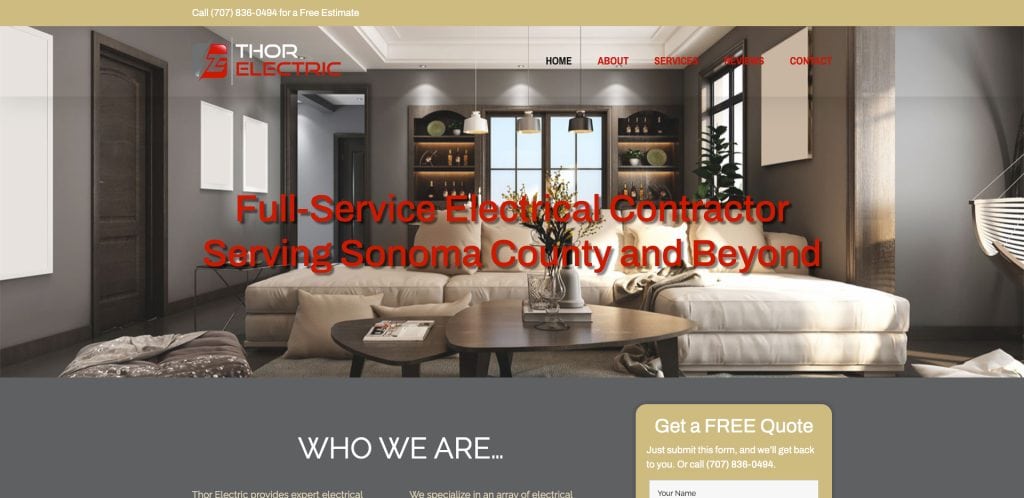
1. Thor Electric
Location: Sacramento, CA
- Modern, professional layout with clear service categories
- Multiple “Get an Estimate” CTAs above the fold
- Authentic project photography and cohesive color usage
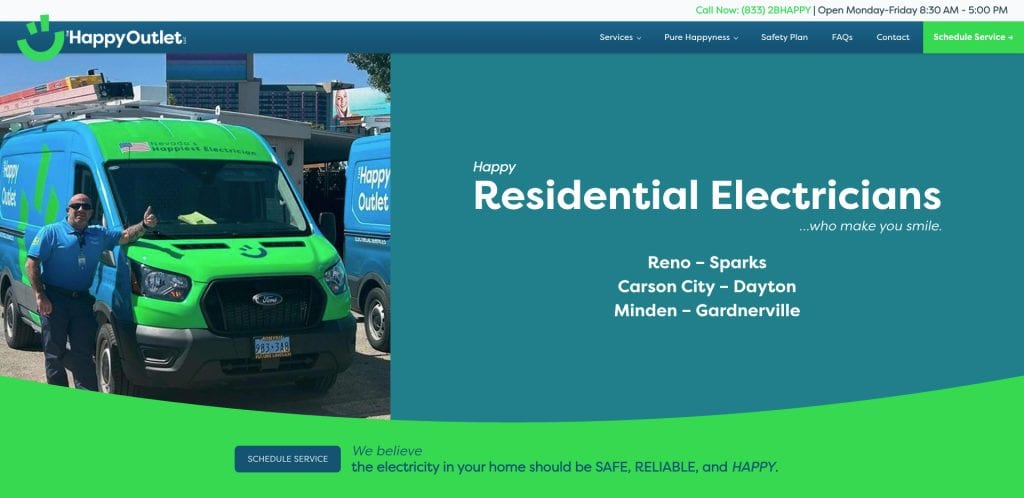
2. The Happy Outlet
Location: Austin, TX
- Eco-conscious palette and brand messaging
- Clean, intuitive service navigation
- Appointment booking form prominently placed
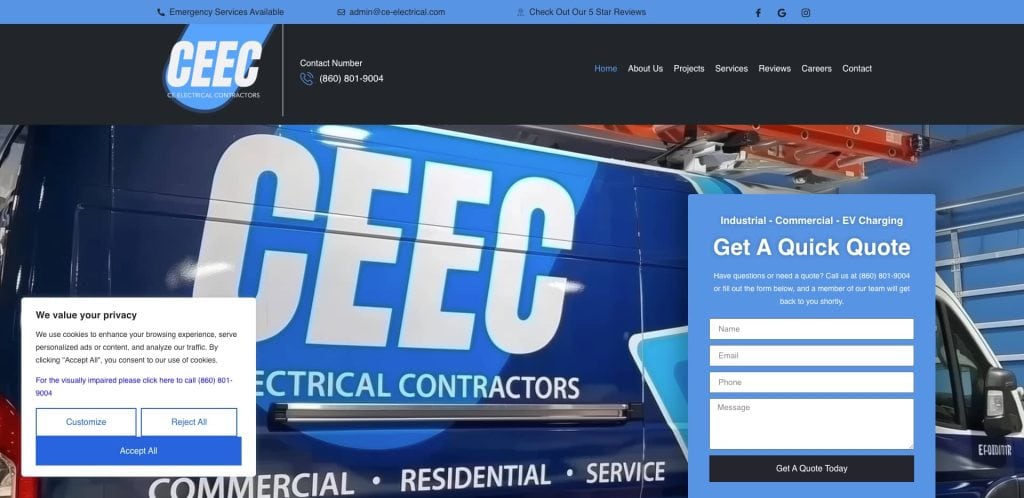
3. CE Electrical Contractors
Location: New Britain, CT
- Categorized residential and commercial service pages
- Integrated customer reviews for trust building
- SEO-friendly structure with local targeting
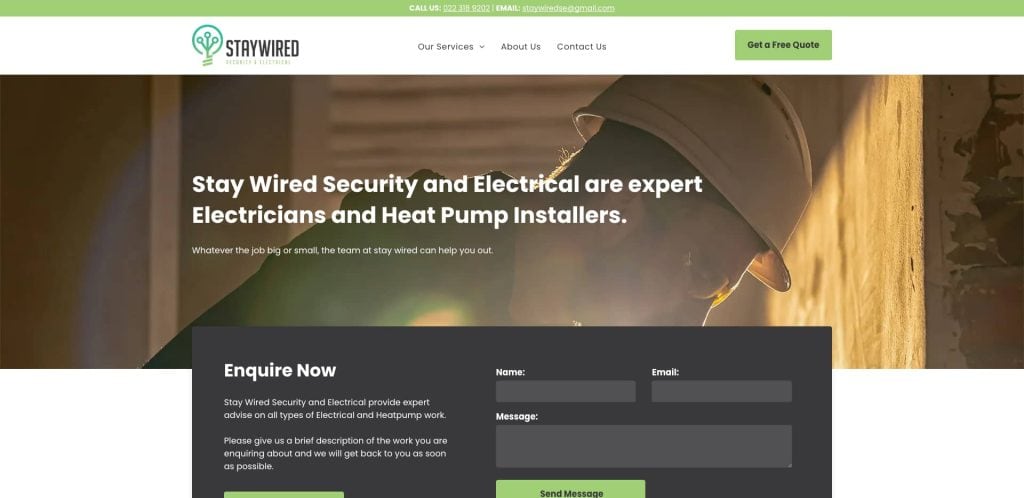
4. Stay Wired Electrical
Location: New Zealand
- Emphasis on 24/7 service and trust badges
- “Request Callback” CTA for immediate engagement
- Consistent branding aligned with the target market
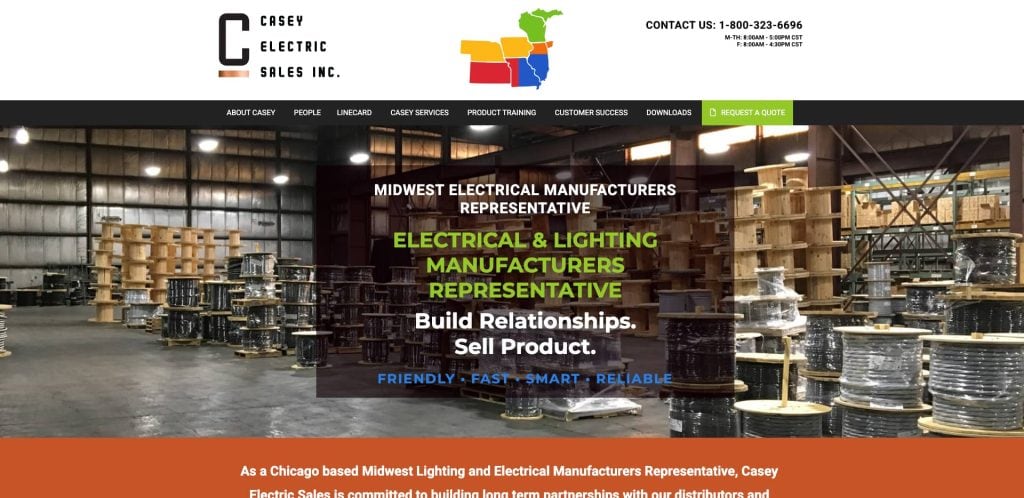
5. Casey’s Electric
Location: Chicago, IL
- Hero video slider grabs attention
- Testimonials and CTAs woven through content
- Clear service breakdowns enhancing usability
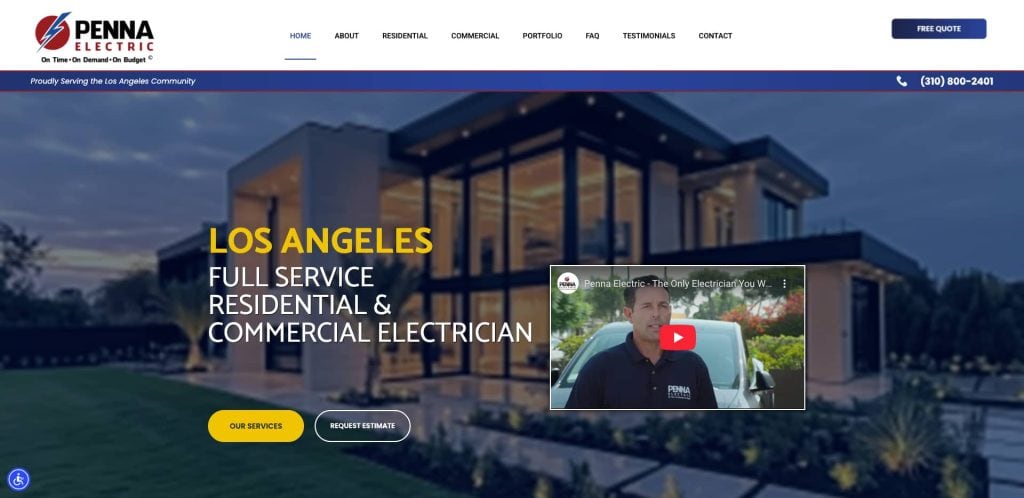
6. Penna Electric
Location: Littleton, CO
- Sleek owner-intro video for personalization
- Visual service boxes to guide users
- Appointment CTA buttons highlighted
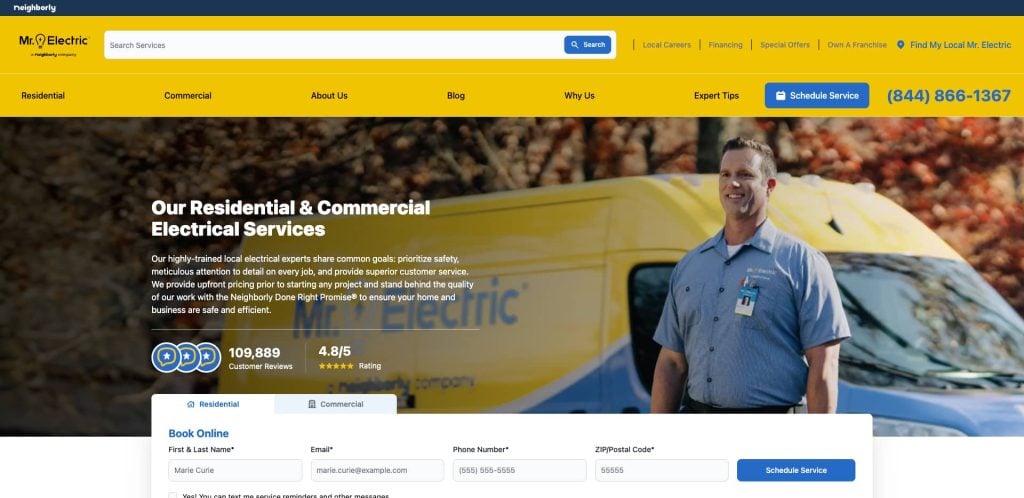
7. Mr. Electric
Location: Multiple U.S. locations
- Consistent national branding across pages
- Dedicated service sections including smart-home tech
- Strong CTAs focusing on emergency calls
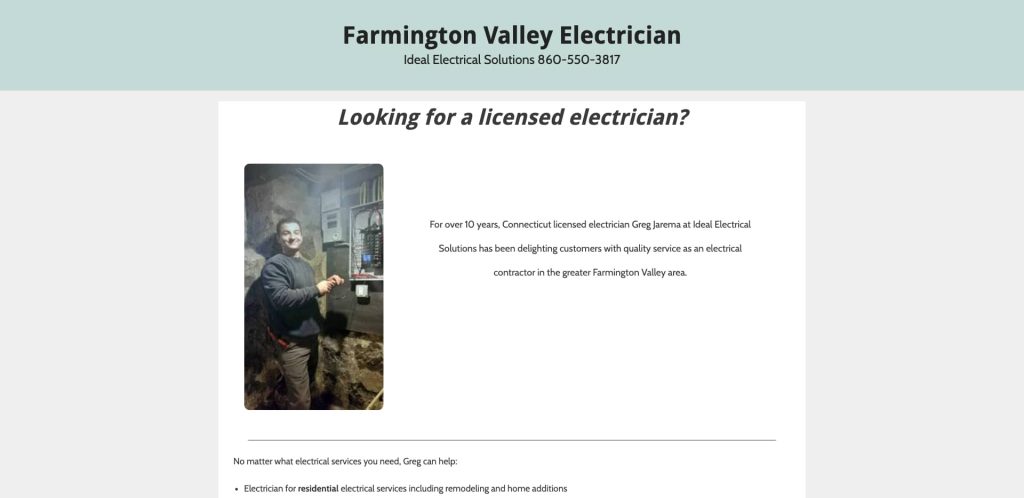
8. Ideal Electrical Solutions
Location: Unionville, CT
- Instant quote request forms are visible on the homepage
- Client portal links for ongoing customer interaction
- Detailed service explanations with value statements
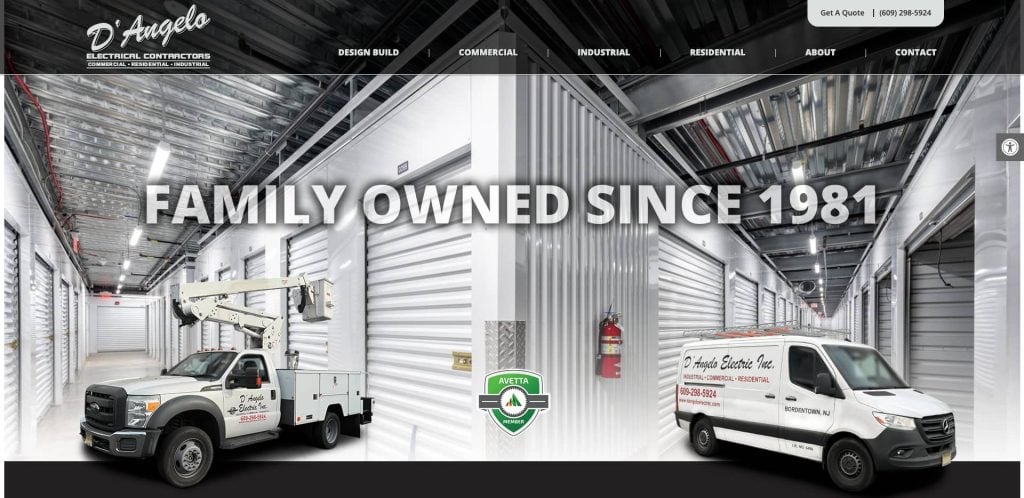
9. D’Angelo Electrical Contractor
Location: Chesterfield Township, NJ
- Segmented menu for residential, commercial, and industrial
- Warranty and satisfaction guarantees highlighted
- Persistent contact info ensures visibility
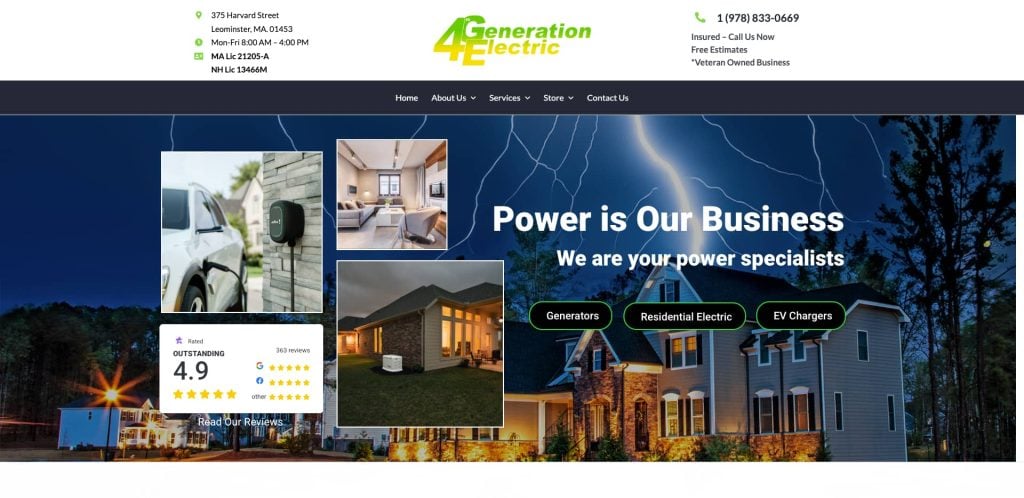
10. 4th Generation Electric
Location: St. Louis, MO
- Prominent veteran-owned and insured badges
- Integrated review showcases for social proof
- Homepage promotional offers for lead capture
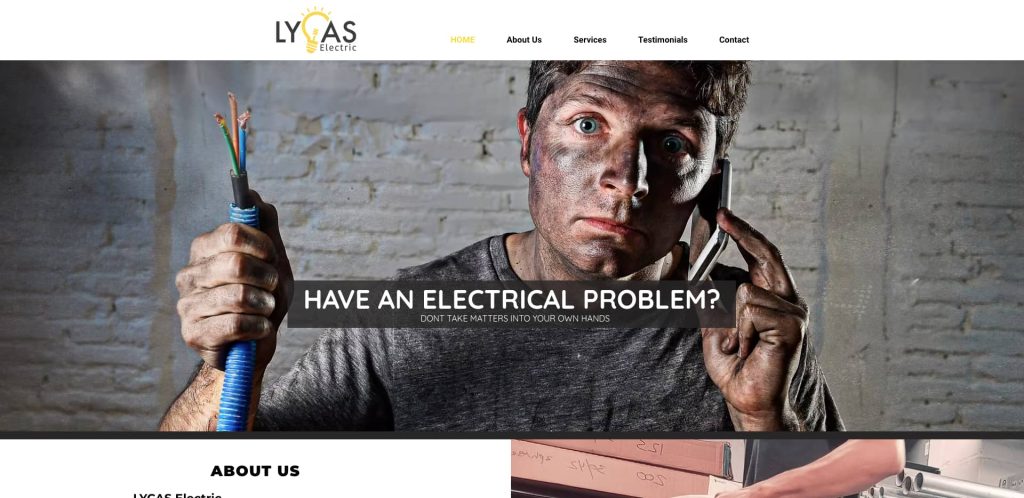
11. Lycas Electric
Location: Phoenix, AZ
- One-page scroll design with bold hero image
- Clear service descriptions with an instant contact form
- Fast navigation reflecting brand professionalism
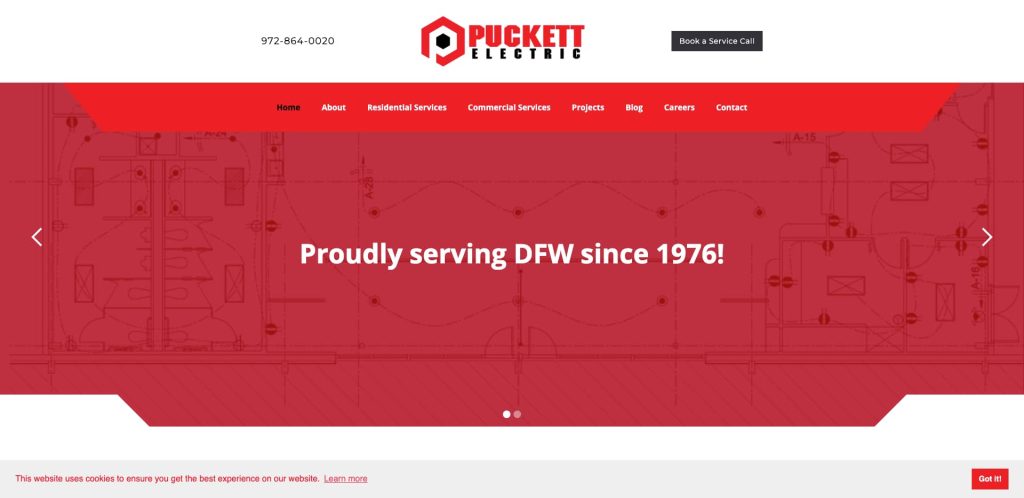
12. Puckett Electric
Location: Dallas, TX
- Strong red branding driving visual impact
- Mobile-responsive layout for better UX
- Blog section adds depth and SEO value
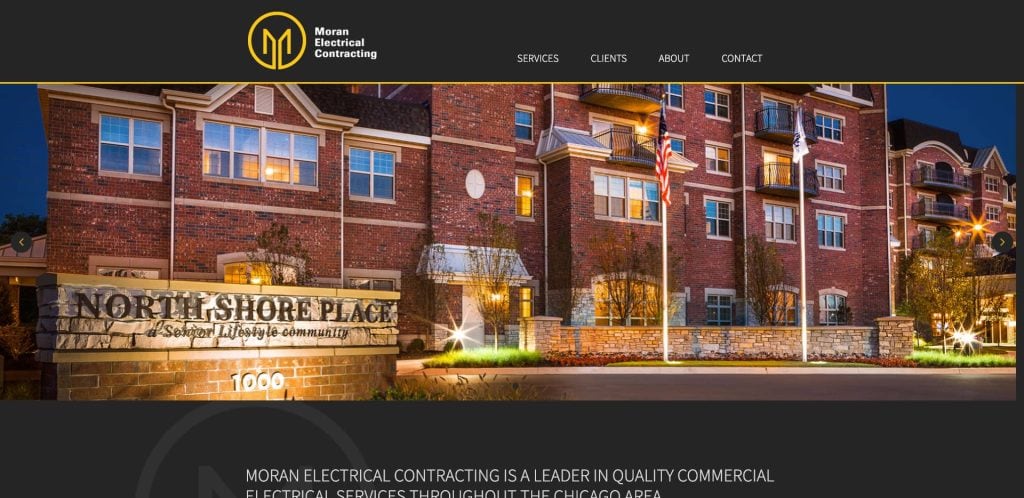
13. Moran Electrical Contracting
Location: Chicago, IL
- Professional imagery across service pages
- Blog and customer reviews for credibility
- Locally focused SEO structure
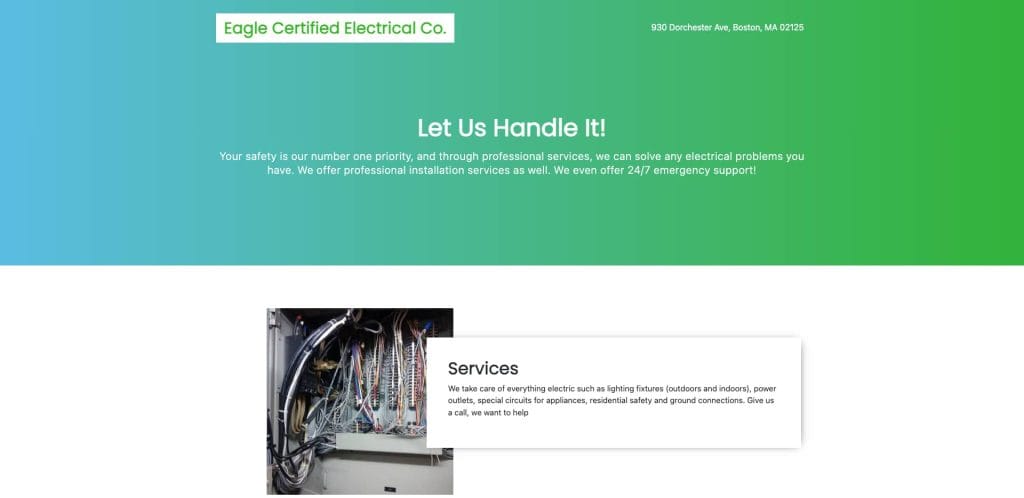
14. Eagle Electric
Location: Boston, MA
- Hero images spotlight core services
- Embedded CTAs for easy conversion
- Navigation is designed for clarity and impact
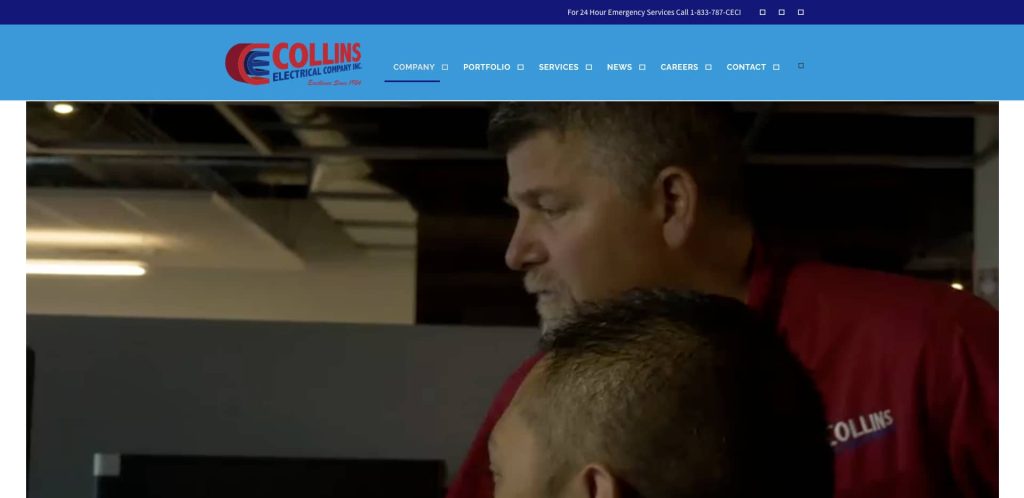
15. Collins Electric
Location: Portland, OR
- Neutral, professional website aesthetic
- Highlights local community involvement
- Phone and contact info clearly visible
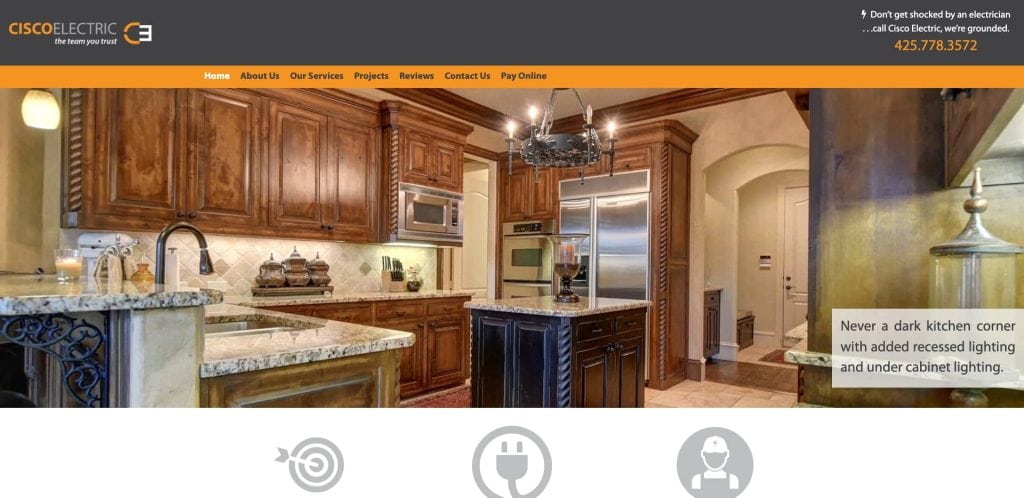
16. Cisco Electric
Location: Raleigh, NC
- Live testimonial feed for trust and transparency
- Interactive service details to guide users
- Structured CTAs across key page sections
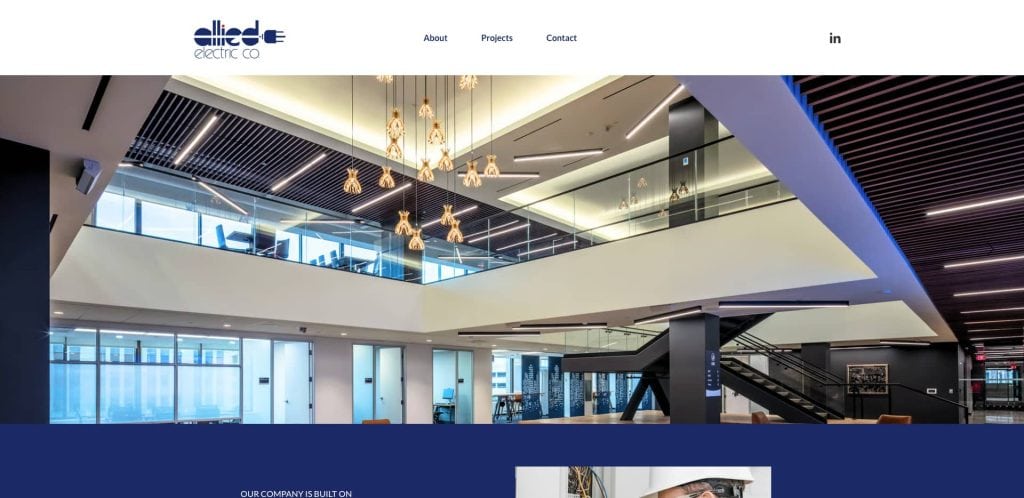
17. Allied Electric (Commercial focus)
Location: Syracuse, NY
- Bold, industrial-leaning hero section
- Project gallery showcasing completed work
- Resource center adds depth and authority
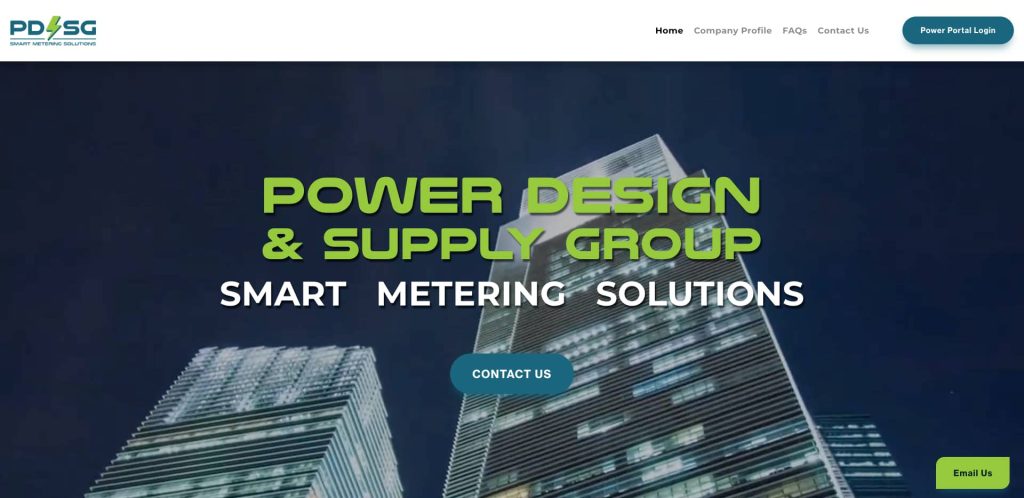
18. Power Design & Supply Group (Commercial focus)
Location: East Hanover, NJ
- Rotating project banners on the homepage
- Interactive service icons enhance UX
- Persistent contact info drives conversions
Ready to Turn Your Website into a Powerful Business Tool?
Your website is often the first—and sometimes only—chance to make an impression on potential customers. If you’re an electrician, your site shouldn’t just exist online; it should actively work to support your business, attract qualified leads, and make it easy for customers to book your services. Whether you’re building from scratch or considering a website redesign, every detail matters—from responsive design and visual branding to content structure and search engine optimization.
A great electrician website design is more than just aesthetics. It’s a business asset that helps you stand out in a competitive market, improves your local visibility, and turns website visitors into paying clients. For business owners and electrical companies alike, investing in websites that work is no longer optional—it’s essential.
If your current site isn’t pulling its weight, it’s time to take action. Let us help you design your website to meet your goals with expert insight, clarity, and professionalism. Request a free consultation today and start building the kind of site your future clients expect.
Frequently Asked Questions About Electrician Website Design
What makes a great website in 2025?
A great website balances professional design, local SEO, and user-focused content to convert visitors into leads. It should include strong branding, a mobile-friendly layout, fast load times, clear calls to action, and authentic photos of your work. A well-designed website also highlights your services, certifications, and testimonials—essential elements that build trust for electrical companies competing in local search results.
How does a professional website help grow my business?
A professional website is a 24/7 sales tool that helps increase visibility and generate qualified leads. When built with search engine optimization and conversion-focused design, your website can make a direct impact on how many people find and contact you. Strong electrician marketing paired with the right website features boosts both website traffic and your return on investment.
What pages should a standard electrical contractor website include?
At a minimum, your electrical contractor website should include a homepage, about page, services page (with subpages for each electrician service), testimonials, a contact form, and service area pages. If you’re targeting commercial electrical work or want to stand out in a crowded field of contractor websites, consider adding a project gallery, blog, and FAQ page. These features enhance trust and improve your performance in search rankings.
Should I use a one-page website for my electrician business?
While a one-page website may seem like a quick solution, it limits how much content and SEO value you can provide. Websites for electricians benefit from having separate pages for services, service areas, and testimonials. A multi-page layout allows you to tailor content to specific customer needs and rank better in local searches. If you’re just starting out, you can build a lean but scalable site that evolves with your electrician business.
Why is responsive design important for electrician web design?
Responsive design ensures that your website works smoothly across all devices, especially mobile phones, where most people begin searching for electrical services. A mobile-optimized website helps you appear higher in mobile search results and provides an easy-to-use website experience that increases the chances a customer will contact you. If you’re working with a design company, make sure your site is tested across multiple screen sizes.
What are the most important website features for electrical companies?
Key website features include mobile responsiveness, fast loading speed, service detail pages, Google Map integration, contact forms, clear CTAs, and visible licensing or credentials. Your website layout should highlight your electrical company name and clearly show how you solve customers’ electrical needs. These features improve user trust and support both residential and commercial clients looking for quality electrical solutions.
How often should I update my website?
A website must be maintained regularly to stay secure, functional, and relevant. That includes updating plugins, checking for broken links, refreshing service information, and publishing new blog content or project photos. If your site hasn’t been touched in over a year, or if you’re still using a basic website built years ago, it may be time for a new website to support your growth. Learn about WordPress website maintenance for electricians to keep your online presence strong.
Can a small electrical company compete online with larger brands?
Absolutely. Small business owners can rank well and attract steady leads with a custom design tailored to their local market. With the right combination of electrical website design, local SEO, and authentic content, you don’t need a massive budget to appear in top search results or earn the trust of new clients. The key is building websites that work and using website design services that understand your industry.
What if I already have a website, but it’s not performing?
An outdated website can hurt your credibility and cost you leads. If your site is hard to navigate, doesn’t show up in searches, or looks bad on mobile, you’re likely missing opportunities. Website design helps turn your online presence into a real business asset. A professional redesign that focuses on your electrical services, overall design, and local search strategy can transform your results. Review our Electrician Website Design Guide for ideas on how to improve.
How can I get started with electrician website design services?
If you’re ready to design your website or replace an old one, work with a design company that understands the electrical industry and offers complete design services—from layout to content to ongoing SEO. We specialize in custom electrician web design that’s built to convert. Request a free consultation and start building a website that works for your business.



